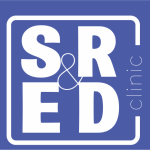Yes, if you perform SR&ED-eligible work, but fail to solve the problem or choose not to pursue the project for business reasons, you can still claim it.
Archive
Is SR&ED Unique, Like a Patent?
- There is a close correlation between patentable work and SR&ED-worthy work. A patent protects the solution to a problem from being exploited by others, where as SR&ED helps to offset the cost of everything that was tried and failed in order to reach the solution to a problem.
- SR&ED claims and patents have some commonalities and many differences. Both patents and SR&ED must cover new technical ground. A patent must be novel, useful and non-obvious; SR&ED must raise the base technology over what is available in the public domain and within the corporation. The work done to advance technology (and which may possibly be patentable) is generally SR&ED-eligible. Unlike a patent, which must be unique, SR&ED could cover the same ground as a competitor providing the competitor or other entity has not made their advances known to the SR&ED filer directly or via the public domain.
What expenses cannot be included?
You can no longer claim capital expenses associated with SR&ED. For example you can’t claim the computers you bought for your software developers and engineers who are conducting SR&ED (you used to be able to but that ended in 2013).
Here is a list of specific activities you cannot claim:
- Market research or sales promotion
- Quality control or routine testing of materials, devices, products or processes
- Research in the social sciences or the humanities
- Prospecting, exploring or drilling for, or producing, minerals, petroleum or natural gas
- The commercial production of a new or improved material, device or product or the commercial use of a new or improved process
- Style changes
- Routine data collection
Some of these are obvious, such as market research, on the other hand, technology to aid the process of market research may well be SR&ED. Others, such as style changes and routine data collection are harder to interpret under some circumstances, which is the reason a SR&ED consultant such as SR&ED Clinic is very helpful to guide you towards claiming all legitimate expenses and staying out of trouble.
What expenses qualify?
The subject of qualifying expenses can be quite nuanced but here are the basics. You can claim expenses that were expended to perform experimentation, including wages, contractors and materials. Staff and contractors must be in Canada, materials can come from outside Canada. If an employee spends half a year experimenting on the SR&ED project, you can claim half their wages. If a contractor was hired to build a prototype, you can claim that too. If materials were transformed or consumed in the experiment, you can claim the materials.
You can claim support activities including the following
- Engineering
- Design
- Operations research
- Mathematical analysis
- Computer programming
- Data collection
- Testing or psychological research
This has to be directly related to the SR&ED work itself, so it is vital that support work is properly understood and applied. It isn’t hard to get confused about such items as data collection, which cannot be claimed if it is routine work.
There are certain activities, such as contracting out welding and electrical work that may be claimed, but it is nuanced and generally cannot be claimed as part of the proxy method.
